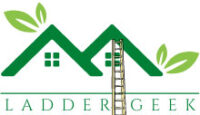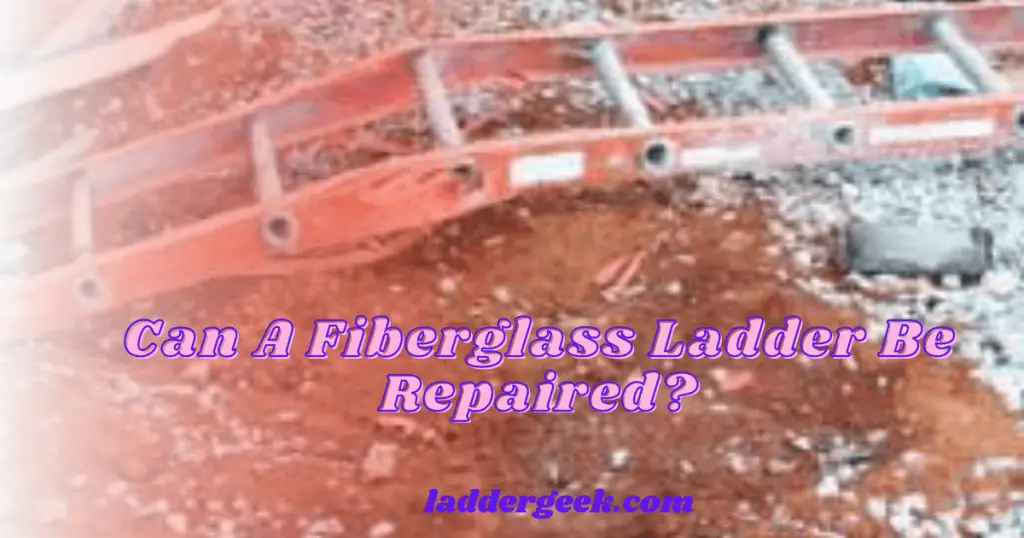Ladder safety is important in preventing serious accidents that sometimes have fatal consequences. This is why performing a risk assessment test before even placing your foot on the first rung is crucial to guaranteeing safety. If the risk assessment shows even the least possibility of a hazard occurring or imminent danger, alternatives must be used rather than.
Ladder Safety Inspection
Before any ladder is used, it is important to perform a diagnostic evaluation of the ladder to ensure it is safe for use. This is the first thing you must do to every little ladder you get whether new or used. Here’s how to perform a safe ladder inspection;
- Inspect the state of the vertical stiles. If these styles are damaged or compromised in any way, the whole ladder could collapse
- Inspect each rung of the ladder to ensure they are all secured in place
- Next, you must inspect the feet of the ladder. Damaged or missing feet could cause the ladder to become unstable and then slip while in use
- Inspect all the ladder’s rivets, bolts, and screws
- Also, inspect any locking system available on the ladder
How to Prevent the Ladder from Slipping
Nobody wants ladder accidents. It is much easier to prevent them than deal with the fatal consequences. We have outlined a few great tips you can employ to prevent your ladder from slipping.
1. Ensure Your Ladder Is Positioned at An Angle of 75°
Before climbing your ladder, ensure you position the ladder correctly to prevent slipping. If the angle of inclination of the ladder is smaller than it should be, the base of the ladder may then slide out.
Also, in the case where the inclination angle is larger than it should be, you run the risk of the ladder toppling over. It is important to always follow the rule of “one in four” when dealing with ladders to ensure safety.
To get the right angle of inclination, the ladder’s base must be placed a foot farther from the building for every 4 feet of the building’s height. This results in the ladder being placed at an inclined angle of 75°.
According to research, in about 49% of ladder accidents, the angle of inclination of the ladder was set at 65° or lower. When the ladder is placed at an angle lesser than 65°, the friction required to keep the ladder in place without slipping increases by 75%.
2. Properly Stabilize the Ladder
One of the safest ways to ensure your ladder is secured before you begin the climb is by using a rope or hook to attach the ladder safely to a strong anchor point. Ladder hooks are capable of securing the ladder to fixed points like a wall or locating a bar. Utilizing a ladder stability device is another option.
This simple yet effective product significantly reduces the risk of your ladder slipping during work. Alternatively, you could use a Ladder Stopper which has a rubber base and is capable of preventing ladder flips and slips.
The pads that prevent skidding rest on the ground while a galvanized T-piece holds the ladder steadily in place. You could also try wedging your ladder into the ground to ensure limited movements.
3. Avoid Placing the Ladder’s Full Weight on The Gutters
When utilizing ladders to work on roofs, tall areas, and roof gutters, ensure you do not rest the full weight of the ladder on the gutter as this will result in the ladder giving way, or the ladder slipping. Instead, use a standoff bracket which will ensure even more stability.
4. Using Anti-Slip Materials
When using ladders, it is important to ensure the environment where the ladder is being used is “ladder-friendly”.
This means that the ground must not be uneven, or the surfaces are capable of causing any hazard. To prevent this, ladder owners are advised to utilize ladder stabilizers and anti-slip devices that will ensure that the ladder does not slip all through the duration it is being used. There are several cost-effective ways to ensure that you are safe while you climb your ladder.
One of such products is the Laddermat Leveler which is great for those intending to work on uneven or sloping ground. This Laddermat product consists of four different mats that are made from quality heavy-duty rubber.
Each of these Laddermat is to be placed under each foot of the ladder to level out the uneven ground. It can also be used on level ground to generate more friction and prevent ladders from slipping. If you also intend to work on soft grounds, this Laddermat can also help on preventing your ladders from sinking.
What Causes Ladders to Slip?
Ladder slip is one of the most common ladder accidents, and while many people believe slippery floors usually make ladders slip, there are several other causes.
1. Wrong Inclination Angle
When climbing a tall building on an extension ladder, getting the angle of inclination right is the first step if you must prevent a ladder slip. As we have earlier mentioned, you must ensure that you factor in the height of the building when determining the inclination angle.
2. Balancing on Uneven Ground
Ladders must be properly balanced to be effective. Placing your ladder on rocky or uneven ground will significantly increase the risk of your ladder slipping. Additionally, using ladders on sinking or depressed grounds can also make your ladder slip leading to a nasty fall. Instead, place a ladder mat, or try clearing the area to make sure it is well balanced before placing your ladder.
3. Ladder Instability
Working with ladders beside tall buildings can be a very dangerous activity. This is mostly because the ladder is usually just slanted against the roof or wall without much else in the way of support.
Ladder stabilizers however can offer maximum support to ladders thereby making sure it is locked in place during the climb with no chance of slipping.
What Can Cause Ladder Failure?
Ladder failures are a constant hazard in the ladder community. These ladder failures can occur anywhere- at home or in the workplace. We’ve listed some of the main causes of ladder failure.
1. Wrong Ladder Setup Angle
To avoid ladder failures, ensure you pay attention to the angle of inclination the ladder makes with the wall. This will ensure that the ladder is properly balanced and can be used effectively without any slips or falls.
2. Wrong Ladder Selection
When it comes to ladder selection, one fact stands true- specific projects require specific ladders. This is important to note when selecting a ladder. Selecting the wrong ladder for any project can lead to ladder failure and hazards.
3. Lack of Proper Ladder Inspection
Before climbing a ladder, you must ensure that you perform a strict and thorough inspection of the ladder. This includes checking the rungs, feet, and bolts of the ladder. This will ensure you do not climb a ladder with cracks and dents.
4. Improper Ladder Use
Improper ladder use is another major cause of ladder failures. Each ladder must be used according to the manufacturer’s specifications. If you want your ladder to be effective and last a long time, ensure you use it properly.
5. Lack of Safety Tools and Ladder Safety Information
Every ladder user must be educated not only on the right way to use a ladder but also on safety drills and instructions on how to be both effective and safe on a ladder. Without this, and the assistance of a safety apparatus that will ensure the ladder is stable, an event involving ladder failure is bound to happen.
What Is the Biggest Cause of Ladder Accidents?
The biggest, most consistent, and universal cause of ladder accidents is human error. Human error by far leads to other causes of ladder misfortunes. This is why it is important to always be properly educated on ladders in general and your specific ladder before you go to pick up one. Also, do not make any adjustments to ladders in any way as this may make the ladder less reliable to use.
What Angle Will the Ladder Slip?
Ladder slips usually occur at a 65-degree angle or lower. To ensure this does not happen, an inclination angle of 75 degrees is advised.
Does a Ladder Need to Be Secured?
Ladder work poses serious safety and health risks, especially if the ladder can just slip or move from its planted position during work. With more cases of ladder accidents occurring from slips, ladders must be secured for added protection. If your work requires the use of a ladder, you must ensure your employer invests in a ladder stabilizer or any other apparatus that can keep your ladder secure.
Conclusion
Proper use of ladders is the only remedy to ladder accidents. You must remain updated with important safety protocols that will not only get the job done but also ensure the safe use of ladders. You can also invest in ladder stabilizing devices that not only stabilize the top of the ladder but also the base.
Joseph is the owner of LadderGeek. He is a home remodeling enthusiast. He has created this blog to share some of his knowledge on Ladder and accessories.



